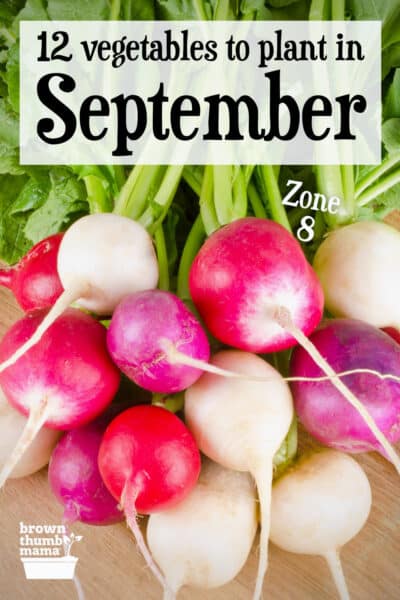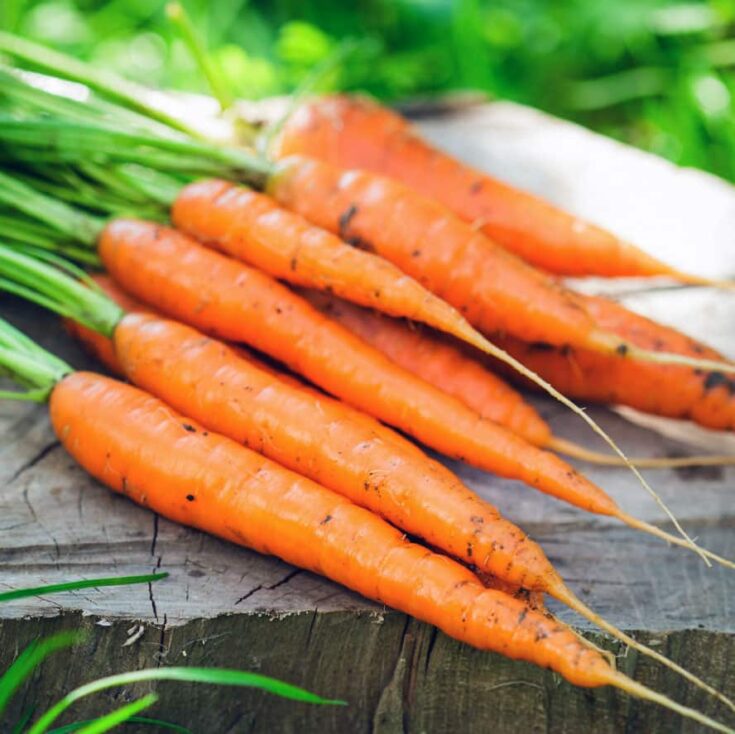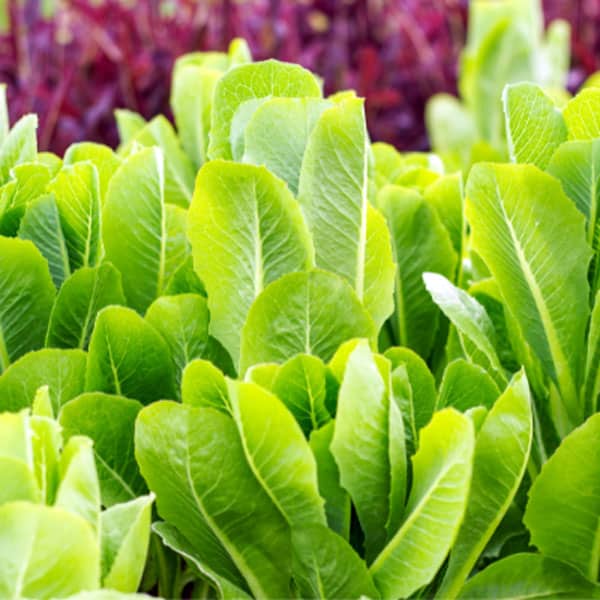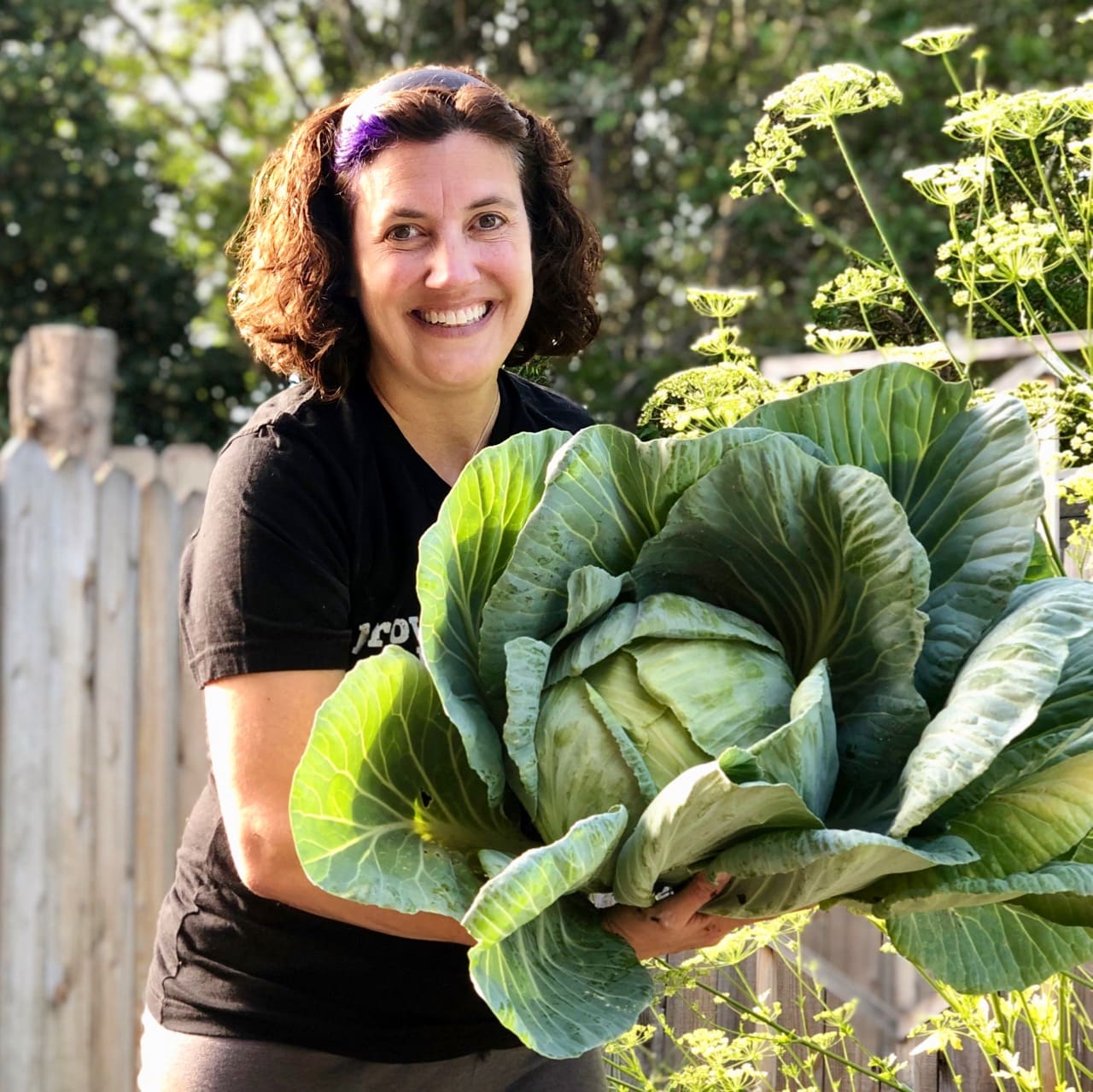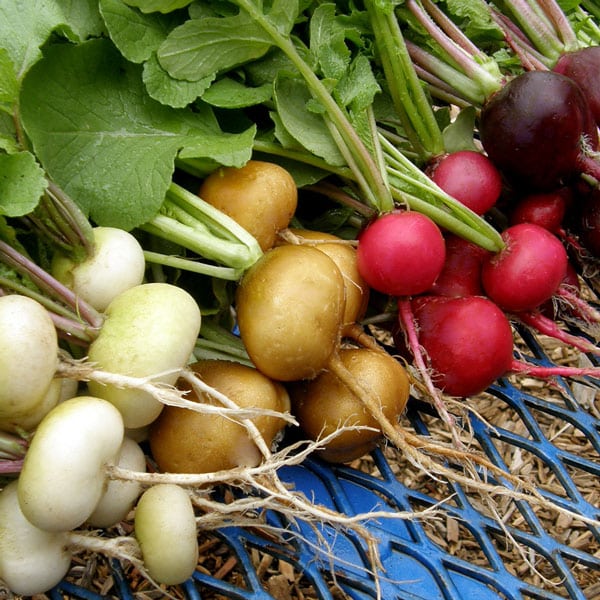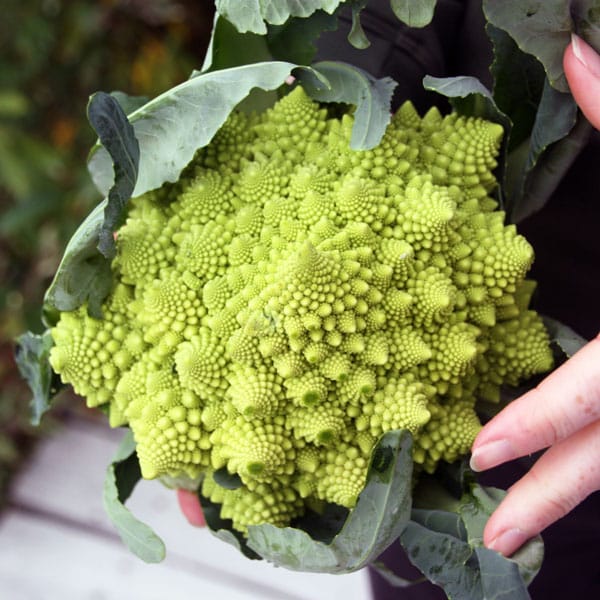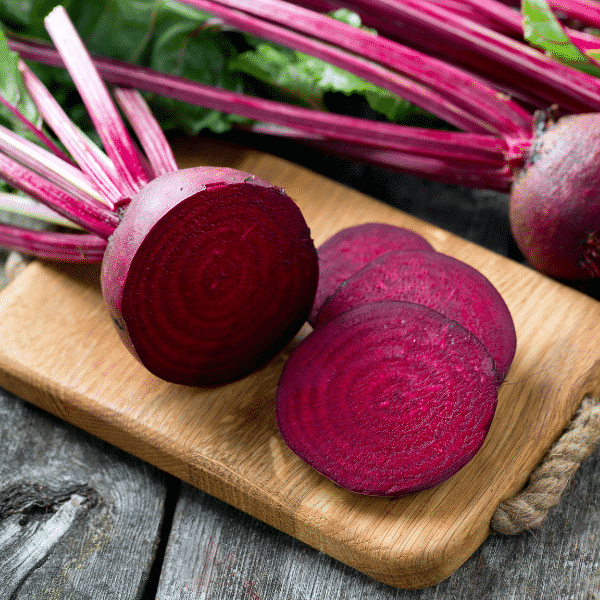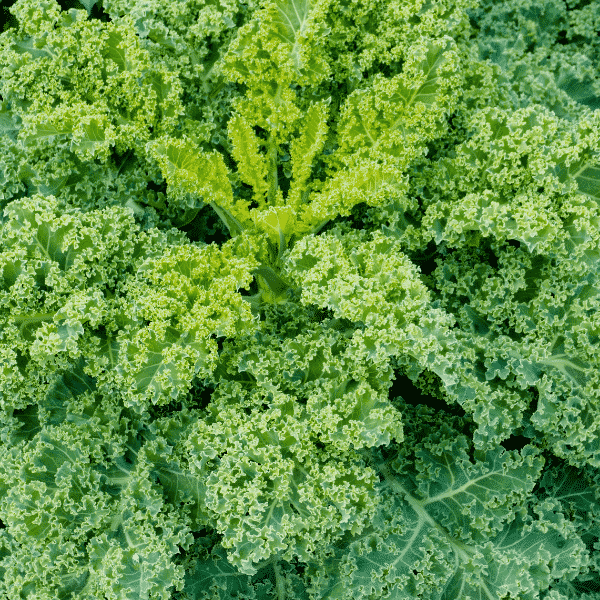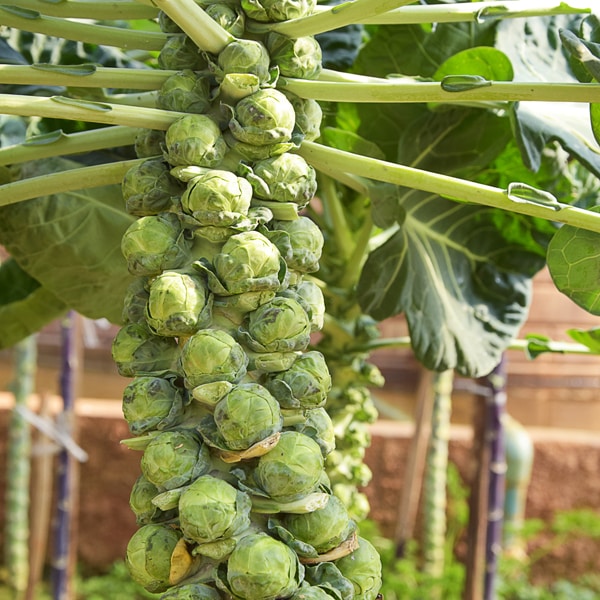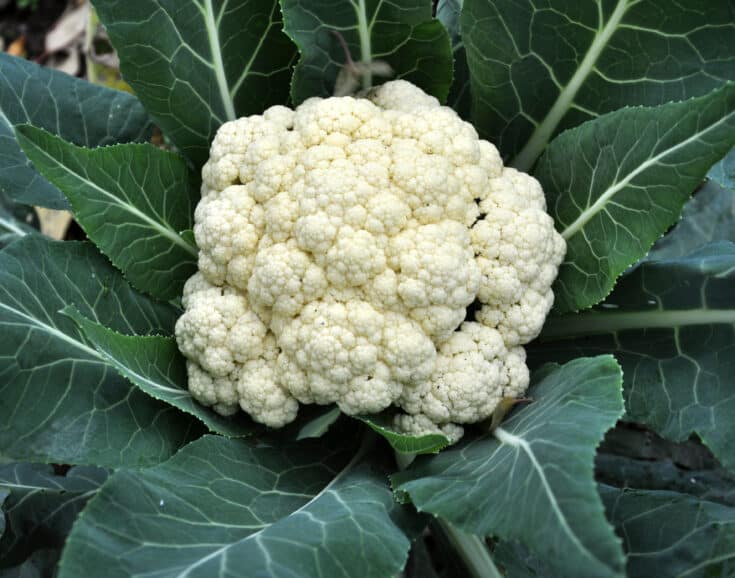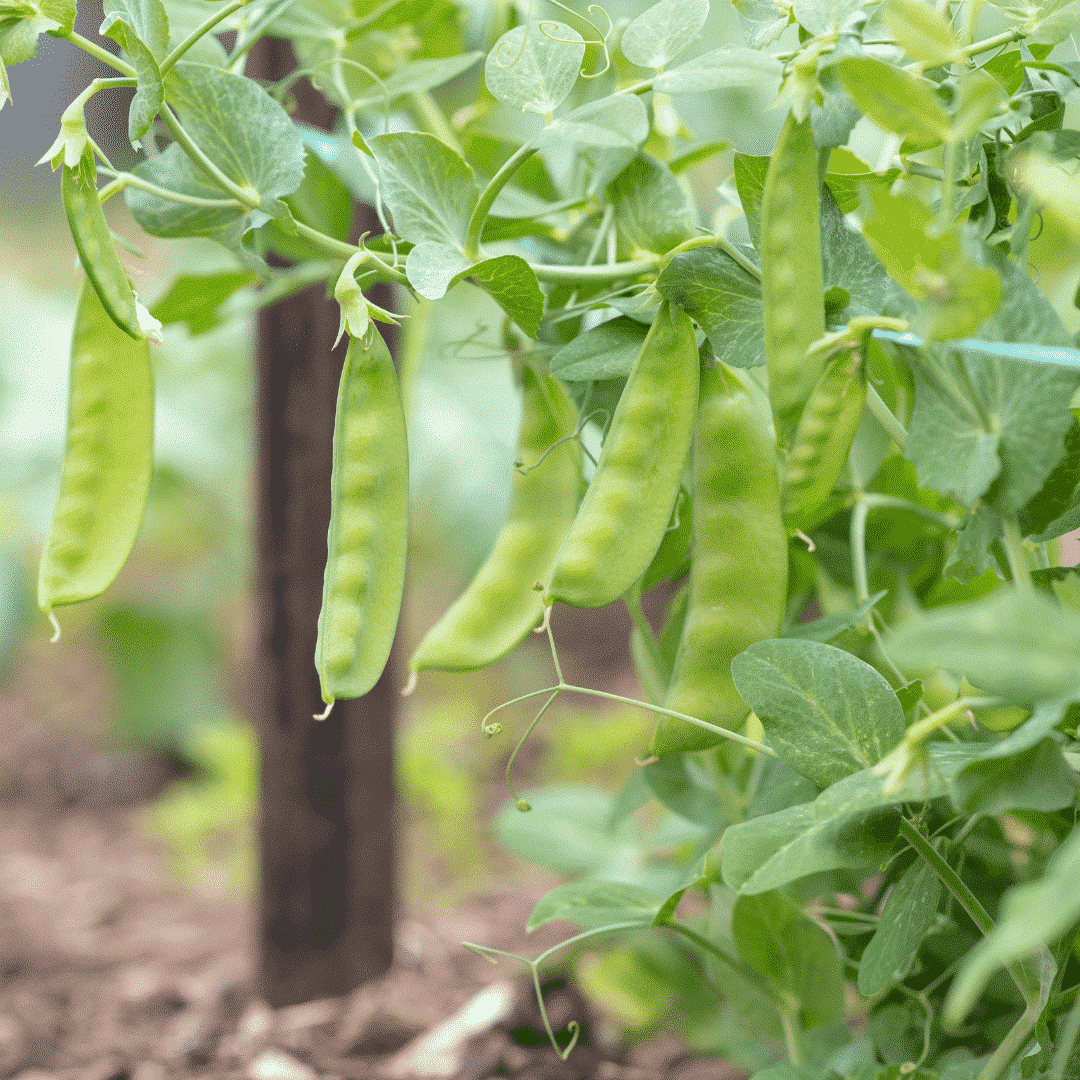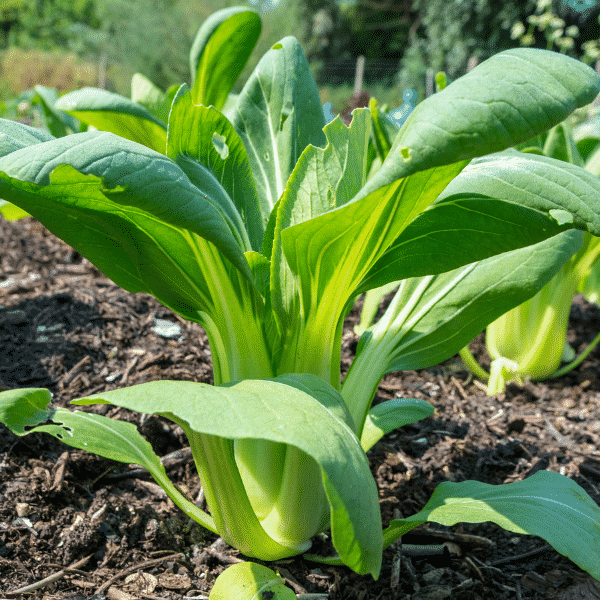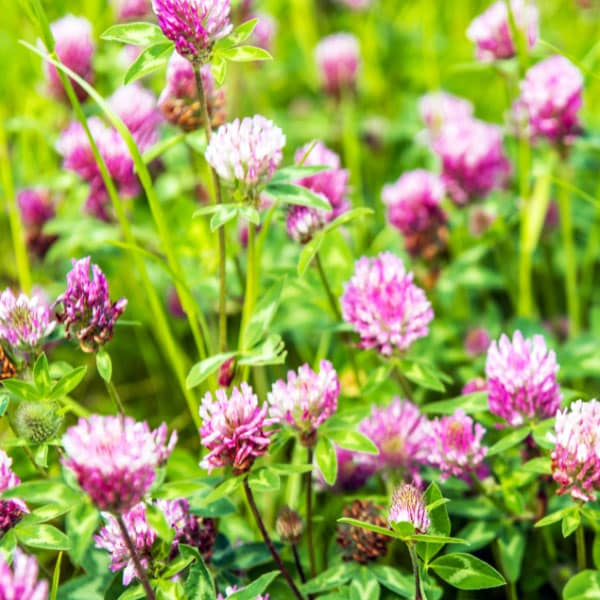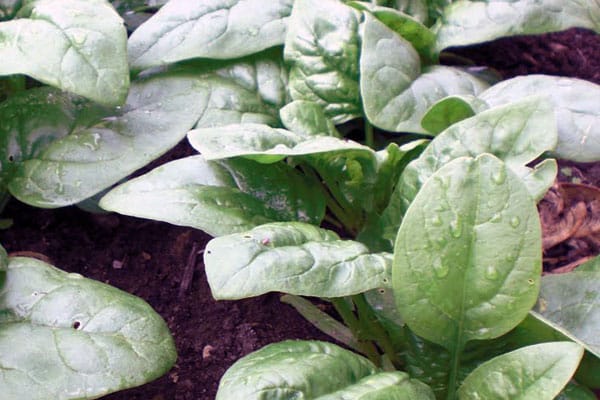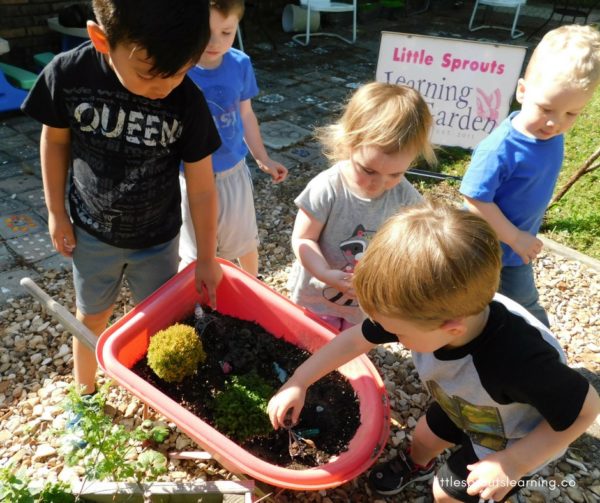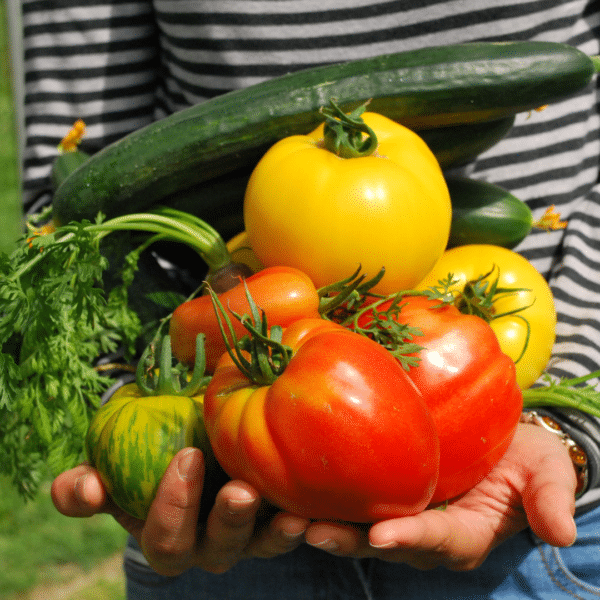This post may include affiliate links.
If you make a purchase, I'll earn a small fee at no extra cost to you.
There are lots of vegetables you can plant in September in Zone 8! This planting guide includes recommended varieties, planting tips, and recipes for your harvest.
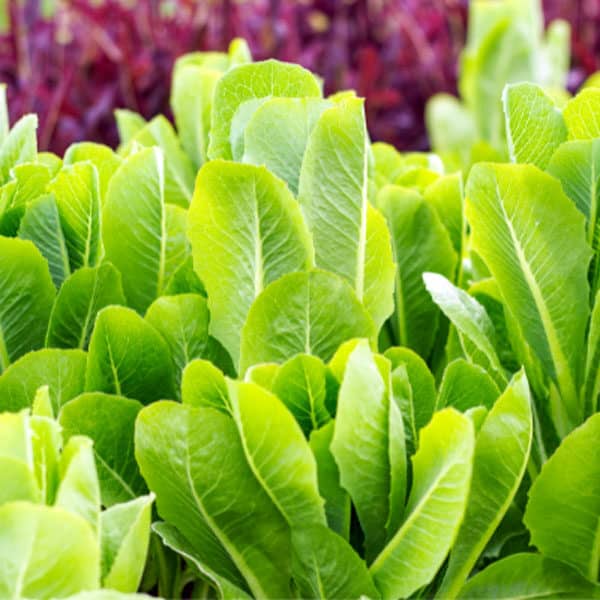
So many people give up on their garden once September rolls around. It’s true that some of the more tender veggies can’t take the heat, but there are many tasty vegetables you can plant in September.
Are you a brand new gardener? Not sure what to plant or when to plant it? I can help.
You’ll find lots of great information in my new book, The First-Time Gardener: Container Food Gardening.
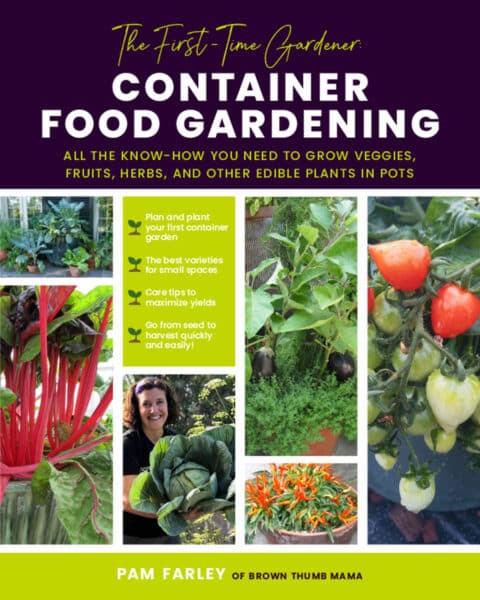
Excited? Me too. Grab your favorite sun hat and let’s get planting.
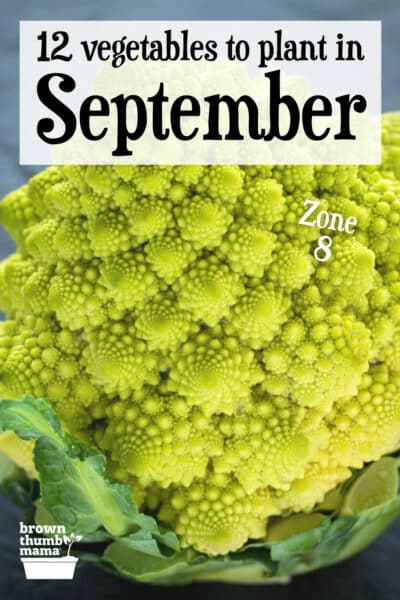
12 Vegetables to Plant in September {Zone 8}
There are so many different kinds of carrots! Different colors, different shapes, and yes--slightly different flavors with each. You’ll probably want to try several different kinds.
Varieties: I like Carnival Blend carrots because of their unique colors, and round Tonda di Parigi carrots for their adorable shape. Scarlet Nantes is my variety of choice for for traditional carrots.
Planting: Carrot seeds are tiny! You can either sprinkle them on the top of the soil and thin the carrots once they sprout, or use a seed dispenser to make sure they’re spaced properly. Learn more about growing carrots.
Recipe: Enjoy your garden-fresh carrots in this easy Summertime Slaw recipe.
Going out to the garden to pick a salad for dinner is the best! And, of course, the foundation for a delicious salad is great lettuce. Iceberg lettuce is pretty blah, so I like to grow different types of Romaine in my garden.
Varieties: Little Gem Romaine is a petite heirloom variety that has a crisp texture and nutty flavor. Rouge d’Hiver Romaine is a stunner, with beautiful bronze-red outer leaves and a green heart.
Planting: Lettuce is a cool-weather crop, so plant it in a shady area. Space your seeds or seedlings about 1 foot apart and ¼” deep. Keep the soil moist and watch for garden pests. Learn more about growing romaine lettuce.
Recipe: When you've picked all the vegetables for your salad, top it off with some homemade croutons.
Yep, that's me with a giant homegrown cabbage. It's not hard to grow, and your neighbors will be amazed when you show off your giant cabbage!
The biggest danger to cabbage (in my garden, anyway) is from critters like slugs and cabbage worms. Here are my favorite tricks to keep these bugs away from my precious crop.
Varieties: Copenhagen Market is my favorite cabbage to grow. It was developed in 1909 and is the standard for many varieties that were developed after it. It’s great for small gardens and container gardens.
If you prefer purple cabbage, Red Acre Cabbage is the way to go. This compact plant is perfect for small gardens or containers, with deep red to purple heads.
Planting: Plant your cabbage seedlings out in the garden this month. Space them about 2 feet apart so they have room to grow.
Recipe: My favorite cabbage dish is so easy, you don’t need a recipe. Fry up diced bacon and onions in a pan. Then add chopped cabbage and stir-fry until the cabbage is just softened. Yum!
Radishes are a super easy crop to grow and are a great choice when gardening with kids.
Varieties: Radishes come in many different colors! I like Easter Egg Blend because you get red, white, rose pink, purple, and bi-color (red top, white base) radishes all in the same seed packet.
Cherry Belle is a great traditional radish. If you really want to throw the kids for a loop--grow Watermelon Radish, which is green and white on the outside and deep red inside.
Planting: Plant the seeds directly in the garden this month. They’ll grow quickly, and you can harvest your radishes when they’re the size of large marbles (in about a month).
Recipes: I love to eat radishes on my salads or just fresh from the garden. When they're small, they're less spicy.
We call broccoli "happy little trees" as a tribute to Bob Ross (and as an attempt to get the kids to eat it). There's nothing like the sense of accomplishment you get from growing broccoli--it's rare in home gardens.
Varieties: Broccoli Di Cicco is my favorite--it reliably produces large heads and then continues to produce smaller offshoots after the main harvest.
Have you ever seen this beautiful variety called Romanesco Broccoli? It’s so pretty, you won’t want to eat it. Romanesco is an heirloom variety with a delicious, nutty flavor and a stunning head made of many spiraling florets.
Planting: Plant your broccoli seedlings directly in the garden this month, about 18 inches apart.
Recipe: Roasted Broccoli with Garlic and Parmesan is an easy recipe the kids will love.
Please don't ever make your family suffer with frozen or canned spinach! Spinach is easy to grow, and is delicious and mild when picked fresh from the garden.
Varieties: Anna Spinach is a new variety that's specifically developed to eat as a baby green. It's perfect for spinach salad, stir-fry, omelettes, or even adding to your morning smoothie. If you prefer a large, traditional spinach, then I recommend Bloomsdale Spinach.
Planting: Spinach is happiest in cool weather, so a garden spot with afternoon shade is ideal. Sprinkle some seeds on the ground, cover with a thin layer of soil, and you'll start harvesting in just 28 days.
Recipes: I love to make spinach salad with strawberries and a splash of poppyseed dressing.
Fresh beets are so much better than those awful canned things we had as kids. And did you know that beets are full of fiber, potassium, folic acid, and vitamin C?
Varieties: I like this Gourmet Blend because it includes 3 different types of beets: Detroit Dark Red with deep red roots and delicious dark green tops, Chioggia with interior rings of bright pink and white, and Golden with bright yellow flesh.
If you prefer traditional red beets, Detroit Dark Red is the way to go. Introduced in 1892, it’s the standard for what beets should be. They’re a deep crimson red, and don’t get woody if they grow too large.
Planting: Start seeds in the garden this month, and harvest in about 60 days when roots are between 1-3 inches in diameter.
Recipes: You can't go wrong with a classic canned pickled beets recipe. They are so good!
Lots of folks make fun of kale because it’s in everything. Kale chips, kale smoothies, kale salad...the list goes on and on.
There’s a reason for this, though. One cup of kale contains more than your recommended daily value of vitamins K, A, and C. It also has lots of trace minerals, like copper, manganese, phosphorus, and selenium.
Varieties: I like Red Russian Kale, which you grow as a baby green. Cut the leaves after about 30 days and you’ll have tender, tasty kale. Then the plant will regrow for another harvest. Cool, right?
Planting: Set out kale plants this month and you’ll be harvesting your first crop of baby greens in about a month.
Recipe: I like to chop baby kale finely and sneak it into a salad, or add it to Homemade Fried Rice or Baked Italian Meatballs.
If you haven’t grown Brussels sprouts before, you are in for a treat. These “baby cabbages” grow on a single stalk like a tiny palm tree.
Varieties: Long Island Improved is my favorite variety. It's been a reliable producer since it was developed in the 1890s...yep, 130 years ago!
Planting: Plant seedlings directly in the garden this month. Don’t worry if you get a cold snap before you harvest—a light frost actually improves their flavor.
Recipe: Brussels sprouts are so tasty when sauteed with sweet potatoes and bacon.
Yes, everybody is turning cauliflower into stuff like pizza crust and rice, but it's still delicious roasted, with a sprinkling of parmesan and a splash of lemon juice.
Varieties: Snowball Y cauliflower is ready to harvest in just 75 days, so you'll be eating cauliflower before you know it.
Planting: Plant your cauliflower seedlings out in the garden this month. Use these tips to keep the aphids away from your precious crop!
Recipe: Cauliflower and Butternut Squash soup is perfect for a cold winter day.
Snow peas are a great vegetable to grow with your kids, because they’re mild in flavor and fun to eat. Our kids sit in the garden and eat them right off the plant!
Varieties: Our favorite variety is Oregon Sugar Pod II. It produces giant, tender snow peas and often sets doubles--two pea pods from each node. Another fun type to grow is the purple-podded Sugar Magnolia snap pea.
Planting: Snow peas need consistent water, and fertile, loose soil with plenty of phosphorus and potassium. Here’s lots more information on planting and growing snow peas.
Recipes: If you end up getting any peas indoors before the kids eat them all, add them to a stir-fry or Homemade Orange Chicken.
Bok Choy or Pak Choi is a delicious vegetable that's often overlooked by home gardeners. If you’ve ever tasted it at an Asian restaurant, you’ll definitely want to grow it in your garden.
Varieties: Toy Choy is a minature variety that tolerates heat and is great for planting in containers.
Planting: Plant seeds outside this month and you'll be harvesting heads with thick, white stems and glossy, dark green leaves in as little as 30 days.
Recipe: Wash carefully, chop, and stir fry with a bit of Black Bean Garlic Sauce. Yum!
What’s a cover crop, you say? Good question. Cover crops are beneficial but expendable plants that you sow in your garden for the purpose of enriching the soil.
Cover crops include red clover, buckwheat, fava beans, peas-and-oats, and hairy vetch. (I know you want to click on hairy vetch to see what it looks like. Go ahead, I’ll wait.)
Cover crops reduce erosion, slow the growth of weeds, and attract beneficial insects when they bloom.
Their roots allow water and oxygen to permeate the soil, and certain cover crops “catch” the nitrogen and minerals in the soil that rains wash away. When you cut the plants down and till them back into the soil in the Spring, the nitrogen and minerals are returned to the soil.
